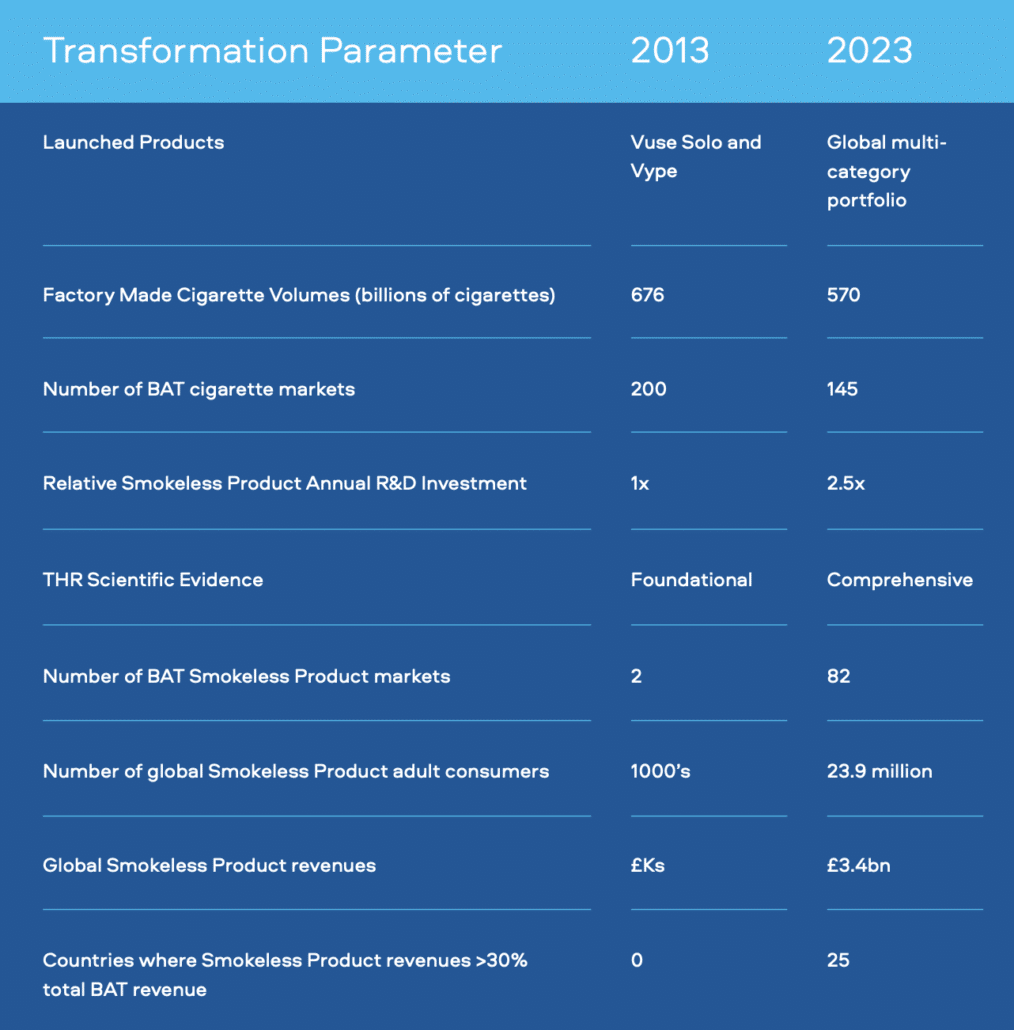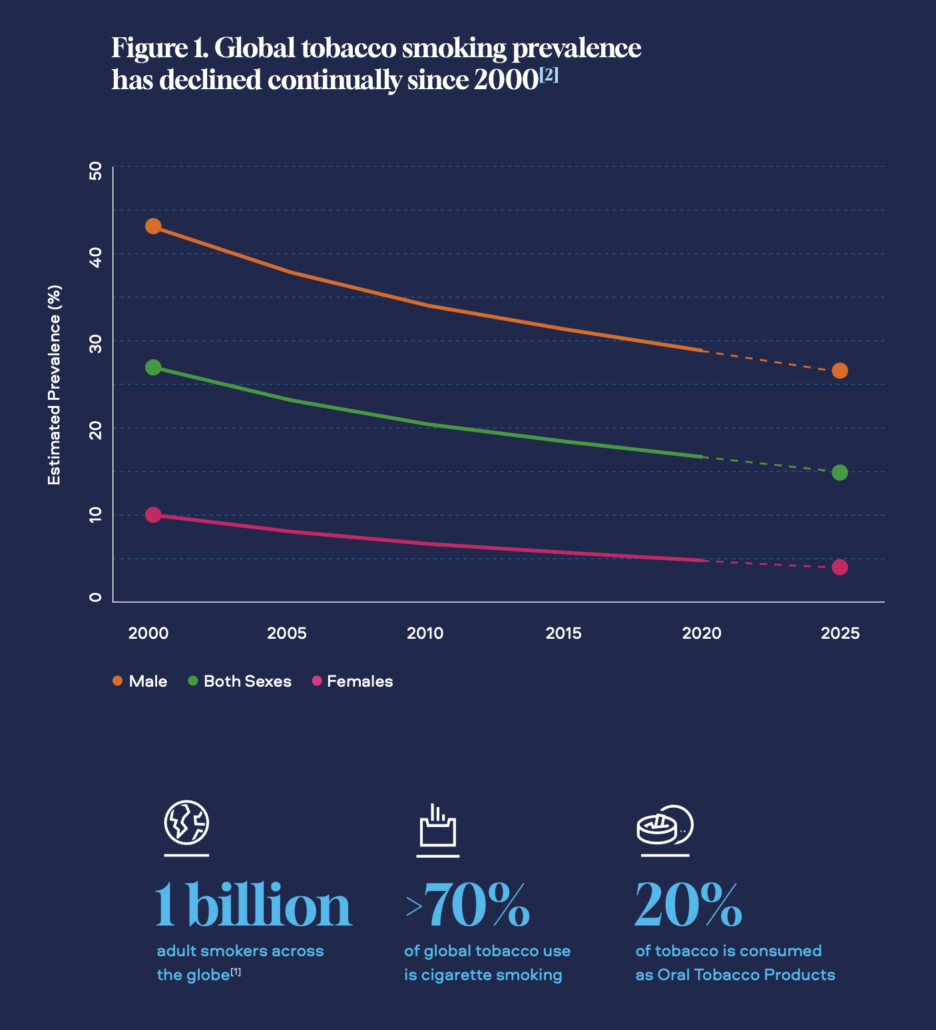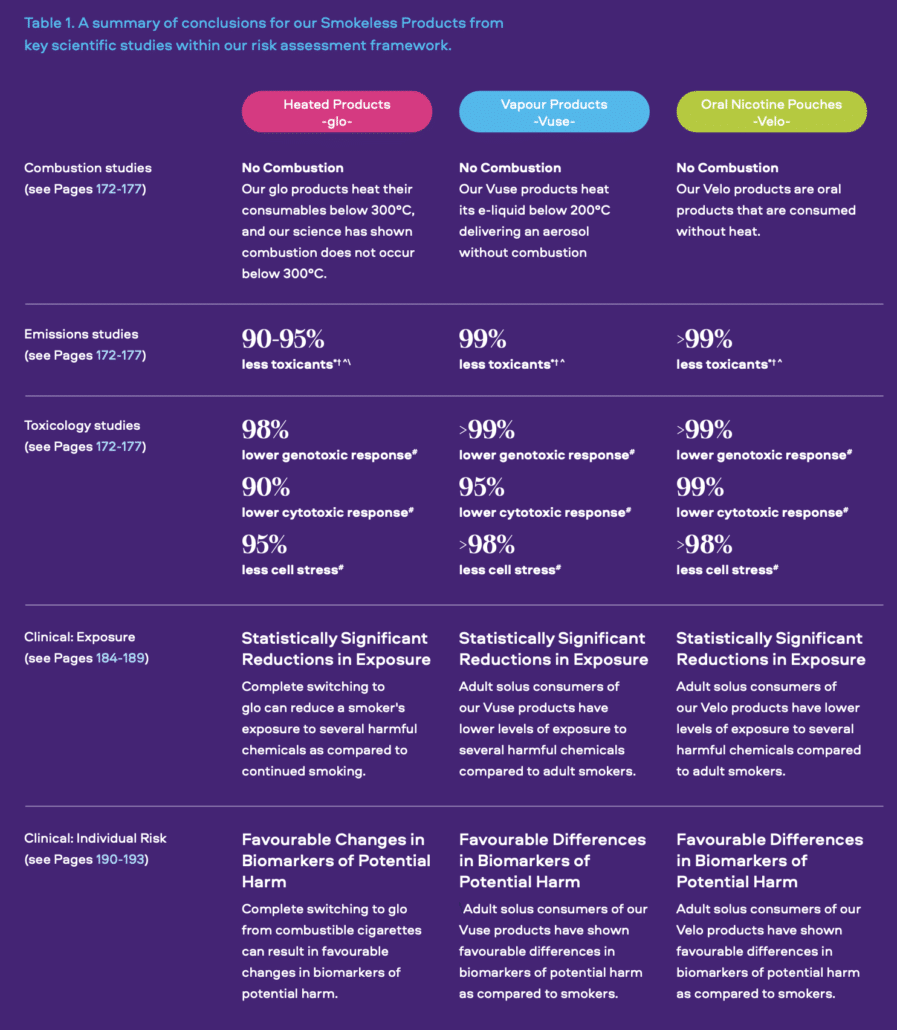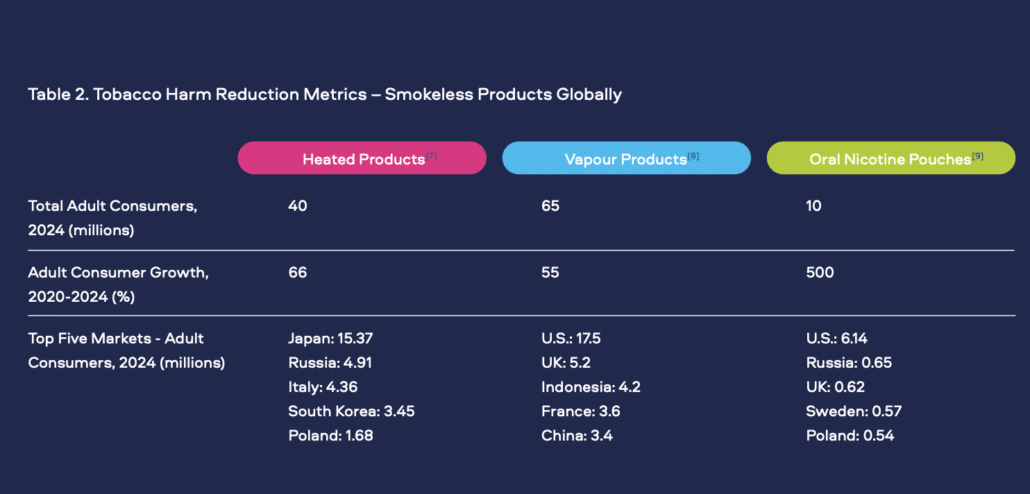One of the great challenges of the 21st century is combating the mortality and morbidity caused by smoking. This challenge only seems surmountable if technological development, balanced regulation, and a commitment to equity and social justice are articulated and supported by a solid scientific foundation.
In this context, and in a bold attempt that appears sincere in its purpose to transform the industry, British American Tobacco (BAT) has presented its vision of a smoke-free future focused on reducing the harm caused by tobacco.
With the ambitious goal of transitioning millions of smokers to lower-risk products, BAT is betting on innovation and science to move away from combustible cigarettes.
However, inevitable questions arise: Will this transformation be powerful enough to overcome misinformation, regulatory hurdles, and public perceptions of nicotine? Will it manage to change the social and cultural dynamics related to nicotine consumption, or will the stigma persist, even in the face of less harmful forms of use?

This September, British American Tobacco (BAT) launched “Omni™: Forward Thinking for a Smokeless World,” an almost 400-page publication designed to drive dialogue and scientific debate on Tobacco Harm Reduction.
Although BAT is one of the leading tobacco companies, this document reinforces its intention to envision a future where smoking, as we know it, is replaced by less harmful, science-backed alternatives.
However, the company, aiming to position itself as a global leader in the development of alternatives such as heated tobacco, vaporizers, oral tobacco, and nicotine pouches, acknowledges that its role in the tobacco industry—traditionally seen as a major threat to public health—raises questions about the authenticity of its new mission.
Nonetheless, as the document reveals, BAT seems convinced of the need to tackle the challenge of transforming its harmful core product into a Harm Reduction product.
The two main pillars behind the Harm Reduction paradigm applied to smoking are well understood by the company: first, it is the combustion of tobacco, not nicotine itself, that causes the severe harms associated with smoking; and second, although the ideal outcome is for smokers to quit entirely, many will not.

In response, Tobacco Harm Reduction strategies aim to encourage smokers who would otherwise continue using combustible tobacco to switch to safer alternatives.
BAT’s non-combustible products, such as its heated tobacco device “Glo” and its vapor product “Vuse,” are presented as lower-risk options than traditional cigarettes.
BAT claims, supported by scientific studies included in its Report, that by avoiding combustion—the main source of harmful chemicals in cigarettes—these products significantly reduce exposure to toxic substances like tar.
The Push for Regulation and Innovation
Aware of public perception and the industry’s historical background, one of the key principles of BAT’s strategy is transparency in research.
The company seeks to engage with regulators, experts, public health authorities, and investors to foster greater acceptance of Tobacco Harm Reduction.
However, it acknowledges that significant regulatory hurdles exist, such as bans on non-combustible products in certain countries and skepticism toward industry-funded research.
In addition to misinformation, many political and public health organizations distrust the solutions promoted by tobacco companies, arguing that BAT’s focus on “reduced risk” might downplay the significant risks still posed by nicotine addiction.
According to the Report, BAT’s ambition to have lower-risk nicotine products account for 50% of its global revenue by 2035 underscores the magnitude of the transformation the company aims to achieve.
This shift mirrors what is happening in other industries, such as the automotive industry, transitioning from gasoline-powered to electric vehicles, as both industries move from combustion-based processes to non-combustion alternatives.
The Report draws parallels to these sectors, highlighting the crucial role of governments and consumer behavior in making these transitions viable.
The company emphasizes the importance of policies that support the Tobacco Harm Reduction approach and effectively regulate new products, much like government incentives have accelerated the adoption of electric vehicles.
At the proposal’s core is creating a regulatory framework that supports Tobacco Harm Reduction while preventing underage use and ensuring safety.
The company has invested billions in research and development to create products like Glo and Velo, designed to offer adult smokers satisfying alternatives to traditional combustible cigarettes.
Although long-term health data is still lacking, BAT relies on a body of evidence suggesting that these lower-risk products expose users to far fewer harmful chemicals than combustible tobacco.

The Science Behind the Smokeless World
Throughout Omni, BAT consistently emphasizes its commitment to science as the foundation of its transformation toward a smokeless future. The company’s research into the toxicology of non-combustible products is key to its message.
BAT points out that public health organizations, such as Public Health England, have concluded that vapor products are likely much less harmful than smoking, though they are not risk-free.
They also cite the case of Sweden, where the widespread use of oral tobacco (snus) has contributed to the lowest rates of smoking and lung cancer deaths in Europe, as a prominent example of the potential for harm reduction in tobacco use.
However, BAT carefully frames its new products as part of a broader public health effort rather than presenting them as perfect solutions.
For instance, they emphasize that although non-combustible products reduce exposure to toxins, they remain addictive due to their nicotine content.
Additionally, BAT clarifies that these products are not designed or marketed as smoking cessation tools but as alternatives for those who are unwilling or unable to quit tobacco entirely.


Towards a Global Perspective on Tobacco Harm Reduction
The document positions BAT as a key player in the global effort to reduce the health impacts of smoking, with the ambitious goal of reaching 50 million users of harm-reduction products by 2030.
BAT envisions a future where cigarettes are a thing of the past, replaced by products that offer lower risks for adult smokers.
However, this future hinges on regulators, scientists, and the public health community’s broader acceptance of the tobacco harm reduction paradigm.
The company calls for more open dialogue and collaborative regulation, highlighting the success of countries like Sweden, where a favorable regulatory environment has helped smokers transition to safer alternatives with a significant positive impact on public health.
Despite the promising outlook, BAT faces considerable opposition from the global public health community, which argues that the best way to reduce smoking-related harm is to eliminate the use of tobacco and nicotine entirely.
Critics remain skeptical of the tobacco industry’s motives, suggesting that commercial interests drive the company’s transformation more than genuine public health concerns.
Although these products have been used and studied for decades, prohibitionists and detractors emphasize the lack of long-term studies on their health impacts.
They also highlight the risk that these products could serve as a gateway to nicotine addiction for non-smokers, particularly among young people.


Making the Future a Tangible Reality
In the Report, BAT presents a vision of a future where lower-risk nicotine products play a crucial role in reducing smoking-related deaths and diseases.
However, BAT’s vision to replace cigarettes with less harmful alternatives depends on the success of dialogue and collaborative strategies among multiple stakeholders. In other words, this desired smoke-free future hinges on present-day decisions, actions, and circumstances.
While the company’s commitment to innovation and harm reduction is clear, the path to widespread acceptance remains filled with regulatory, scientific, and ethical challenges.
BAT aims to lead the global shift toward a smoke-free future, but the success of this effort will largely depend on the decisions made by governments, public health authorities, and consumers themselves.
If this transformation is achieved, it could truly reshape the tobacco industry. For now, however, a smoke-free world remains a vision requiring sustained effort, dialogue, and trust to become a tangible reality.
About
The document Omni™: Forward Thinking for a Smokeless World outlines British American Tobacco’s (BAT) vision to build a future without conventional cigarettes through a tobacco harm reduction strategy. BAT promotes a transition to non-combustible products, presented as safer alternatives for smokers who are unwilling or unable to quit tobacco. This approach is based on scientific research and a strong commitment to innovation. Despite regulatory challenges and resistance from certain public health sectors, BAT aims for smokeless products to account for 50% of its global revenue by 2035, positioning itself as a leader of transformation within the tobacco industry.
Highlights
A Future Without Cigarettes: BAT is committed to reducing dependence on conventional cigarettes. By 2035, it aims to generate 50% of its revenue from smokeless products.
Reduced-Risk Products: Safer alternatives, such as heated tobacco, vaporizers, and nicotine pouches, are targeted at smokers who are unable to quit tobacco.
Science as a Pillar: BAT’s transformation is supported by studies showing that smokeless products expose users to fewer toxins than cigarettes, though they still contain nicotine and maintain addiction.
Regulatory Challenges: BAT faces resistance from regulators and public health sectors, which question the long-term effectiveness of reduced-risk products and their impact on public health.
The Swedish Example: Sweden, with its low rates of lung cancer and smoking due to the use of smokeless oral products, is presented as a successful model of harm reduction.
Ambitious Goals: BAT aims to reach 50 million smokeless product users by 2030, promoting greater collaboration with regulators and governments to accelerate the adoption of harm reduction policies.
Must Read: Omni™: Forward Thinking for a Smokeless World

